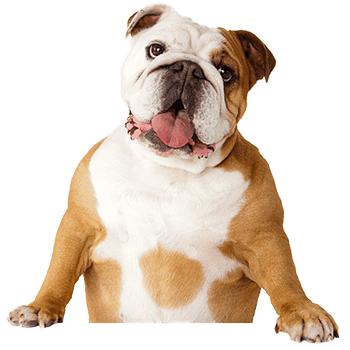Dogs don’t always display signs of pain in ways that are obvious to humans. However, when a dog is suffering from bloat, or gastric dilatation-volvulus (GVD), it’s critical to pick up on the symptoms.
What is bloat?
Bloat is a medical, and surgical, emergency – it occurs when a dog’s stomach fills with food, gas, or fluid causing it to expand and then twist or flip. It can occur to any dog, at any time without warning.
When this happens, the pressure and twist prevent blood from the abdomen and hind area from returning to the heart. This causes blood to pool and reduces the blood volume, potentially leading to shock.
Symptoms of bloat in dogs
Because bloat happens so quickly, it’s important to be well-attuned to your dog’s habits. The quicker you identify the symptoms, the sooner you can get your dog life-saving care.
· Abnormal enlargement of the abdomen. Usually after eating or drinking water.
· Hunched stance
· Retching and drooling
· Restlessness
· Vocal whining
· Distressed behavior/whale-eyes
· Rapid heart rate
· Difficulty breathing
If you notice any of these symptoms, especially paired together, get your dog to a vet immediately. Shock can happen in under two hours, and after that bloat is commonly fatal.
Treating dogs with bloat
Once at the vet, if your dog has gone into shock, they will address that first. If he is not yet in shock or if he is stable, surgery is likely the next step. During this surgery, the vet will release the gas/fluid within the stomach and undo any twisting or flipping. Any damaged stomach lining or tissue will be removed during this surgery.
Dogs that experience bloat just once have a 90% chance of it occurring again – this can be due to breed, genetics, etc. Your vet will likely recommend tacking your dog’s stomach, which is a procedure to secure the stomach to the abdominal wall to prevent it from twisting in the future.
How to prevent bloat
Despite extensive research, there is no clearly defined way to prevent bloat – though there are many recommendations, few just have the data to back the claims.
Bloat is known to be hereditary and most prevalent in breeds with deep, narrow chests (Great Danes, Weimaraners, etc.) and is twice as common in male dogs as females.
Some studies have shown that raised dog dishes and large meals given once daily could increase the risk of bloat. Additionally, dogs that eat quickly are at an increased risk of experiencing bloat. To help reduce risk, do not feed out of raised feeders (if can be avoided) and look into getting any fast-eating dogs slow feeders. Slow feeders are bowls with ridges and gaps designed to slow down how quickly your dog is able to eat.
Bloat is a tricky medical event and despite best efforts can still occur. If your dog shows signs of bloat, immediately seek assistance from a veterinarian.


